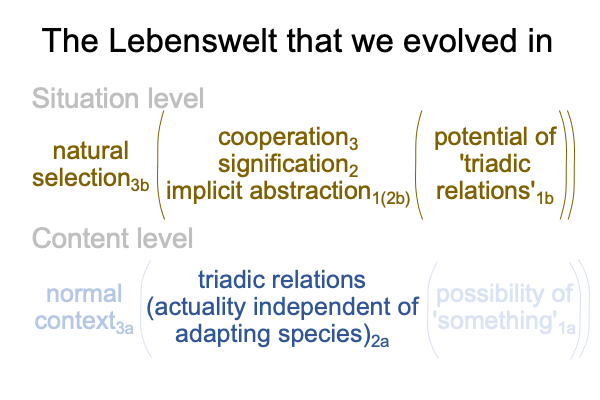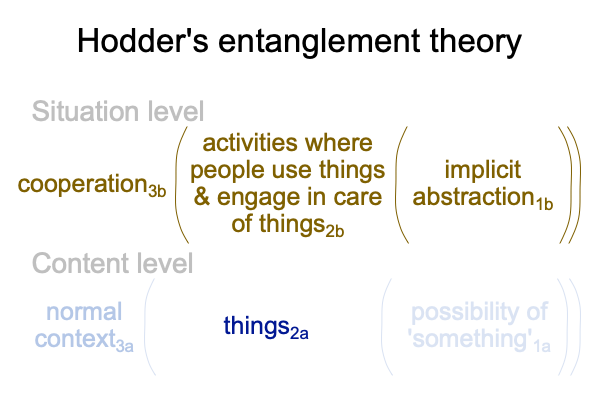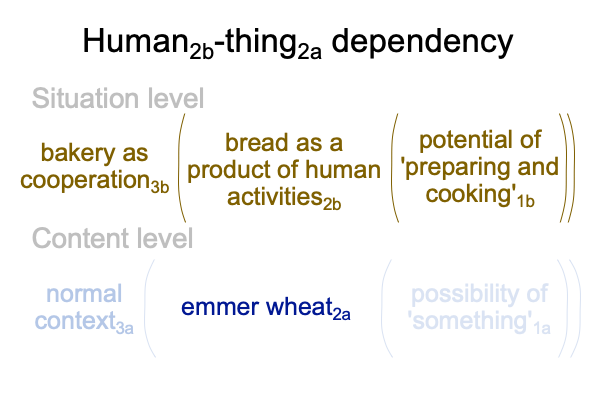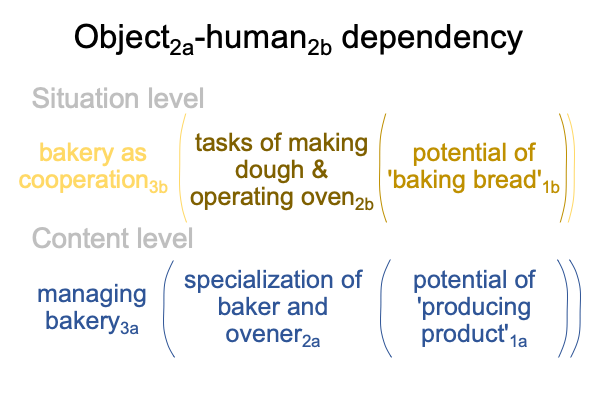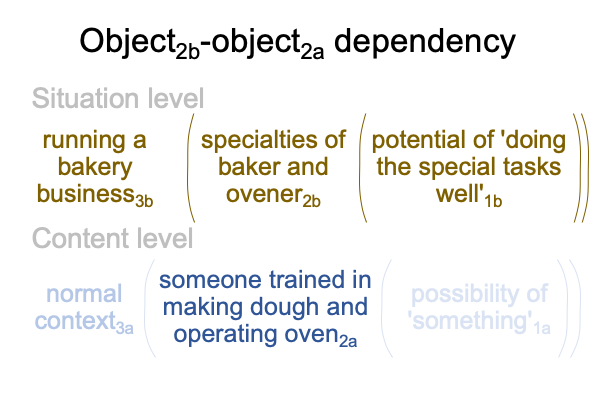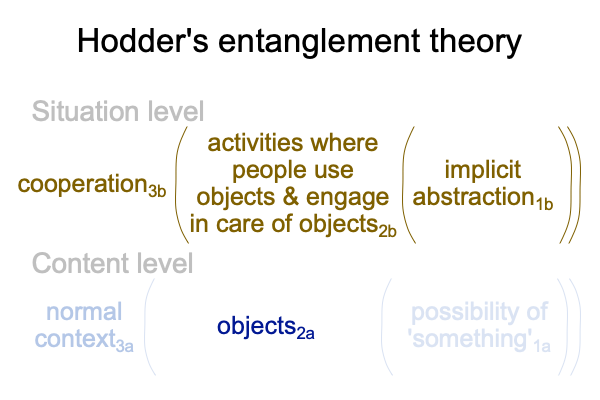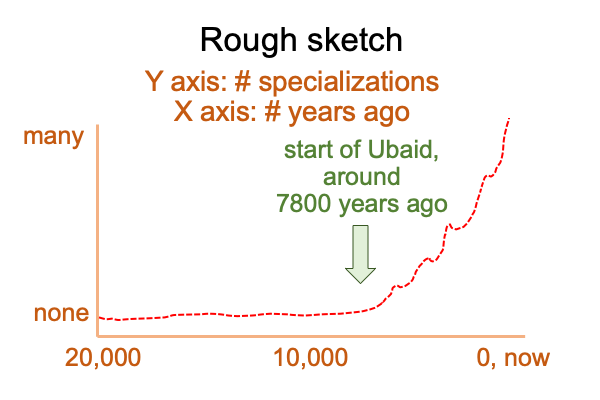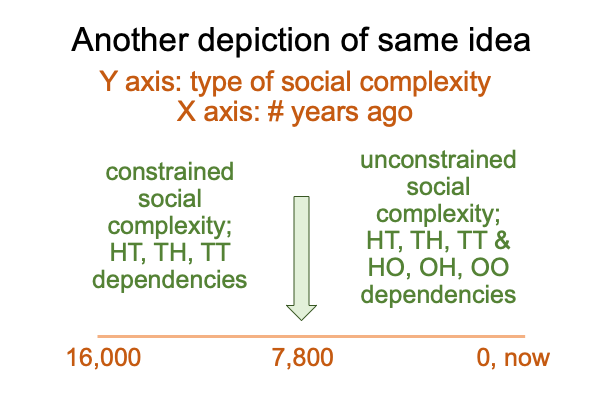Looking at Ian Hodder’s Book (2018) “Where Are We Heading?” (Part 7 of 15)
0052 The first three dependencies, H2b-T2a, T2a-H2b and T2b-T2a are fully expressed within the two-level interscope of Hodder’s sensible theory of entanglement.
My next question brings in the hypothesis of the first singularity, mentioned in points 0029 and 0030.
Do these dependencies require explicit abstraction?
Or, do these dependencies roll out holistically, as if entanglement2b proceeds in the same fashion as natural selection2b?
If so, these dependences are guided by implicit abstraction.
0053 Plus, parallels between human evolution3b and Hodder’s entanglement3b, already noted in the third day of this blog (points 0017 to 0022) offer intriguing insights.
0054 Here is a picture of the ultimate human niche.
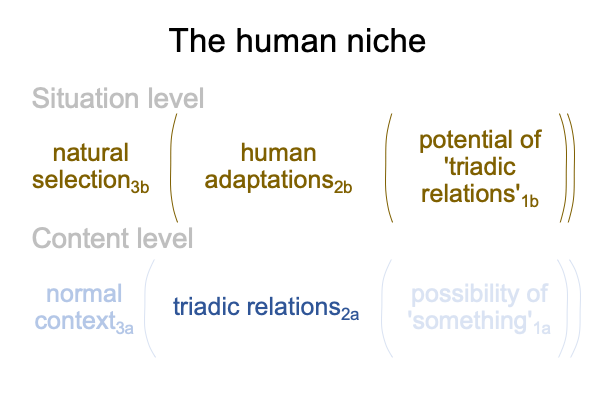
0055 Note that triadic relations2a compose the actuality independent of the adapting species2a. Triadic relations2a are immaterial (technically, purely relational) beings… er… things2a. Yet, they are real enough to support the ultimate human niche. The beauty of this proposal is demonstrated in Comments on Steven Mithen’s Book (1996) The Prehistory of The Mind, by Razie Mah, available at smashwords and other e-book venues.
0056 Compare the above figure to triadic relations2a as things2a in the normal context of entanglement3b. Triadic relations include humans as one terminus and things as another terminus. For example, a particular type of cloud may serve as a sign of coming inclement weather. At the same time, humans may serve as one terminus and humans as another. For example, a gesture pointing to a cloud of a particular type may signal that certain precautions should be taken, such as moving to higher ground or building a shelter.
Here is a picture of Hodder’s sensible entanglement theory with triadic relations as things2a.
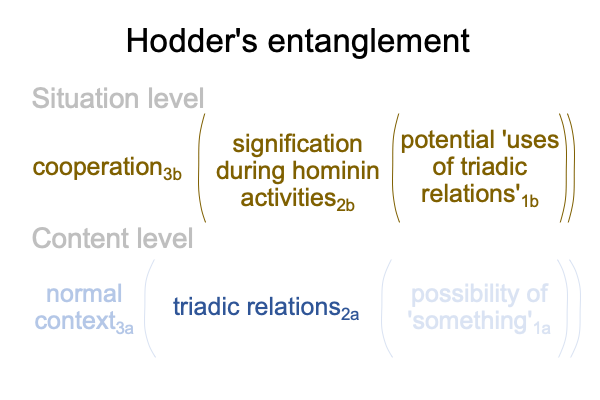
0057 Of all the potential ‘uses of triadic relations’1b, one stands out: the use of manual-brachial gestures to sign to one another during team activities. This connection is explored in Comments on Clive Gamble, John Gowlett and Robin Dunbar’s Book (2014) Thinking Big, by Razie Mah, available at smashwords and other e-book venues.
0058 Team cooperation3b brings manual-brachial gestures2b into relation with the potential of ‘sensibly picturing or pointing to salient things and events’1b.
I call the spectrum from pantomime to fully grammatical manual-brachial gestures, “hand talk”.
0059 On top of that, a juxtaposition of the situation-level category-based nested form for the human niche and for Hodder’s sensible entanglement theory suggests that the entire situation-level nested form for entanglement constitutes the actuality of human adaptation2b.
0060 Here is the comparison.
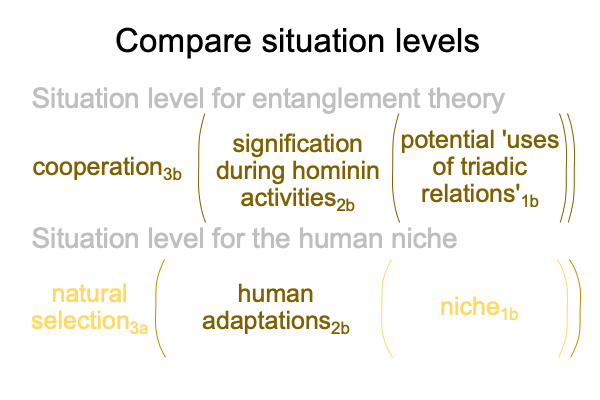
0061 Does the nested form at the top neatly fit into the situation-level actuality at the bottom?
It appears so.
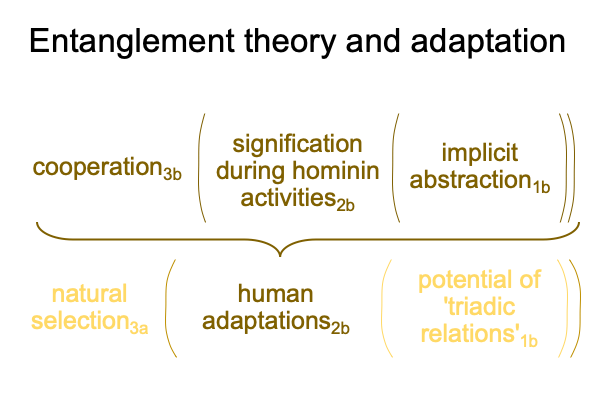
0062 But, I add an important note.
Look at the situation-level potential1b. It1b changes from the potential of triadic relations to implicit abstraction.
In human evolution, cooperative3b activities2b locate uses of triadic relations1b without an explicit awareness of the nature of triadic relations2a. Indeed, an explicit awareness of triadic relations only appears on the stage of civilizationduring the past four-hundred years, first, with the Baroque Scholastic John Poinsot and second, with the American Postmodern Philosopher Charles Sanders Peirce.
Instead, our awareness of triadic relations is implicit. Implicit awareness1b coincides with potential ‘uses of triadic relations’1b. Implicit abstraction is innate and explains why the neocortex size of hominin brains has systematically expanded during the past two million years. See Comments on Derek Bickerton’s Book (2014) More Than Nature Needs,by Razie Mah, available at smashwords and other e-book venues.
In other words, entanglement theory applies to the evolution (and history) of the situation-level nested form of cooperation3b, where the potential for cooperation1b may be labeled with the term, “implicit abstractions1b“.

